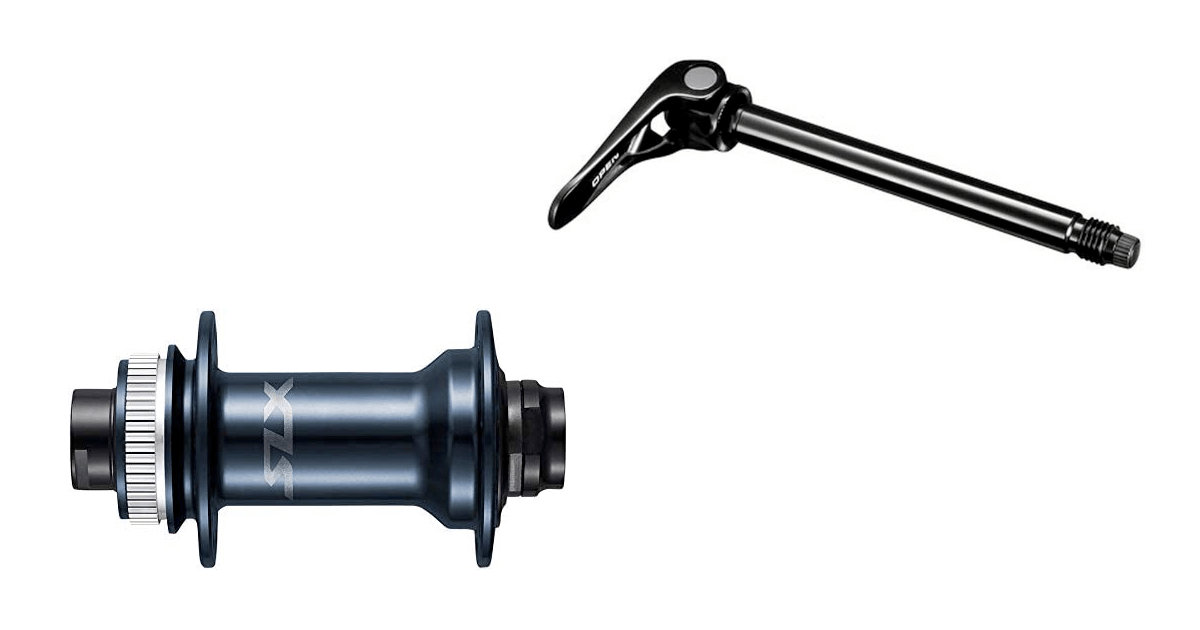MTB end standards
End Width
End width is one of the bicycle standards to fit the wheel and frame, and all bicycles, not only MTBs, have a specific end width.
There are three parts of MTB for which end width is specified as follows.
- wheel (hub)
- fork
- frame
You can simply remember it as “the standard for selecting wheels.
If you buy an MTB and do not plan to replace the wheels, there is no need to consider the end width, but if you plan to upgrade the wheels later on, the end width is a very important point.
However, if you are planning to upgrade your wheels later, end width is a very important point. This is because the end width and end standard of the MTB you buy will determine your future upgrades.
Shaft Standard
The end of the MTB is connected to the wheel and frame/fork by a shaft, and there are various standards for the shaft. MTB shaft standards are determined by “shaft type x shaft thickness x shaft length.
The two major shafting methods used in MTB are “quick release” and “through-axle. The shaft system determines the end shape of the frame form, so they are not interchangeable.
Shaft thickness can be 9mm for quick release and 12mm, 15mm, or 20mm for through-axle. The length of the shaft is then matched to the end width.
Types and combinations of MTB end widths
MTB end standards are determined by “end width” and “shaft standard,” but not all combinations are available, and the combination determines the type to some extent.
MTB with through-axle boost standard
The current standard for higher grade MTBs is the through-axle boost standard. The front is 110 x 15mm through-axle and the rear is 148 x 12mm through-axle, and this is the standard that offers the most options when considering MTB wheel upgrades.
The basic rule is to match the standard of the complete bike, but since suspension forks are often upgraded on MTBs, it is possible to use boost standard wheels only on the front even on a non-boost standard MTB.
MTB with Quick Release Standard
The quick release standard is still used in many entry grade MTBs. The front wheel is 100 mm and the rear 135 mm, the same standard used on some disc road and hybrid bikes.
Today, there are much fewer options for MTB wheels, but some manufacturers offer conversion adapters to convert standard through-axle wheels to quick-release standard.
Standard Through-Axle MTB
This standard was once used for higher grade MTBs. The axle thickness is the same as boost, but the end width is narrower. Therefore, it is not possible to install Boost wheels on a standard through-axle MTB.
Even now, there is a relatively good selection of MTB wheels for standard thru-axle bikes, although they are middle grade or lower (some manufacturers use conversion adapters).
The rear end is the same as on current disc road bikes, so there is an option to use a gravel rear wheel, or you can replace the front suspension with a boost wheel and use a boost standard front wheel only.
Which end standard MTB should I buy?
If you want to use your MTB for a long time, you should choose boost standard through-axle.
Currently, the mainstream end standard for MTB is boost standard through-axle, and it is no exaggeration to say that if you want to use your MTB for a long time while maintaining and upgrading it, you should choose boost standard through-axle.
However, as you get into MTB, you may well change the type of bike itself (from hardtail to full suspension, etc.), so it is possible to enjoy city riding and light gravel riding with a cheap quick release type at first, and then switch to a full-fledged boost standard thru-axle MTB when you get into it. If you are into it, you can switch to a full-fledged boost standard through-axle MTB.
If you ride mainly on the street, a cheap quick-release type is OK.
On the other hand, if you choose an MTB for city riding, you will mainly ride on paved roads, so an inexpensive quick-release MTB will be fine. Since quick-release MTBs can be purchased for less than $1,000, one way to enjoy riding MTBs is to sell them and replace them with new ones when you get tired of riding them.
However, keep in mind that quick-release MTBs limit your options in terms of wheel upgrades.
